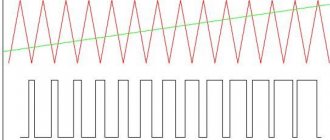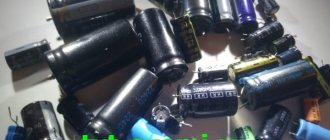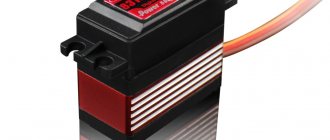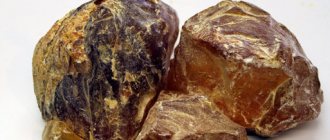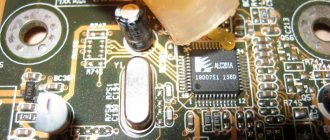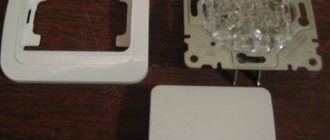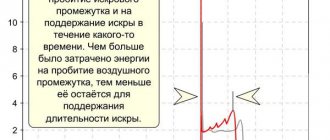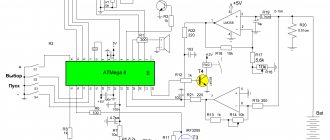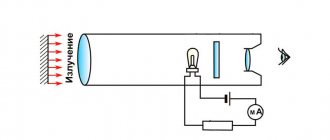What is flux used for?
The main functions of these substances are the following:
- Removing films of foreign substances that interfere with the soldering process;
- Improved wetting of soldered parts;
- Improving the spreading of solder and its fixation with the surfaces being soldered;
- Preventing oxidation of metal heated during the soldering process.
Without the use of flux, the soldering process may be ineffective, and the reliability and quality of the work performed may be very low.
Types of flux compositions
The substances under consideration are divided according to the type of effect on the parts being connected during the soldering process. Flux is capable of removing a thin oxide layer of metal from the surface, thereby reducing the likelihood of corrosion. The most common types of fluxes are:
- Active. Hydrochloric acid is used in production. Such compositions are suitable for joining iron elements. In some cases, zinc chloride is used in manufacturing. Active flux has increased chemical activity. The increased degree of electrical conductivity allows you to connect large wires. This design option is not recommended for use in radio engineering, since flux residues are practically impossible to remove from the surface of the boards.
- Acid-free. This substance is created on the basis of glycerin, as well as ethyl alcohol or turpentine. Its use is possible at temperatures up to +150°C. The active composition can remove thin layers of lead, copper, and tin from the surface. Therefore, when using it, the surface can be cleaned. Area of application: surface soldering without metal separation. Craftsmen use the composition to work with small parts and electrical circuits.
- Activated. A similar substance is made on the basis of aniline hydrochloride and salicylic acid. The area of application is the soldering of all parts that do not need to be cleaned first. It is possible to use activated flux when joining materials that are subject to mechanical stress during operation.
- Anti-corrosion. The purpose of such compositions is to protect the surface from the occurrence of corrosive deposits. The main component is orthophosphoric acid; it is included in all impregnations with anti-corrosion properties. The substance does not have a destructive effect on the structure of the material; corrosion is removed through a chemical reaction.
- Protective. The composition of the substance determines that after its application the required level of protection against oxidation is provided. A distinctive feature of this group is that olive oil, wax, petroleum jelly and other oily substances are used in production. The area of application is soldering small microcircuits.
- Refractory. In the manufacture of such flux options, copper, zinc and phosphorus are used. In some cases, silver is also included.
Classification is also carried out according to other criteria; only a specialist can choose the appropriate version of the substance, based on his experience. The wrong substance will reduce the performance of the resulting compounds.
Types of fluxes
All fluxes are divided into 3 large groups:
- Acidic (active);
- Low-active;
- Neutral (inactive or protective).
Resistor - what is it and what is it for?
The main practical difference between active fluxes and weakly active and neutral ones is the need to remove their residues upon completion of the soldering process - the acids and aggressive salts contained in such substances, remaining on the soldered surfaces or parts, will cause accelerated corrosion.
On a note. In addition to the classification by melting point described above, all these substances are divided into two large groups: fusible and refractory.
Low-melting substances (rosin, its alcohol solutions, soldering acids) are used for soldering ferrous and non-ferrous metals with tin-lead solders at temperatures up to 5000C. Refractory substances (calcined borax, a solution of borax in boric acid, calcium and barium chlorides) are used for soldering ferrous and non-ferrous metals with copper, silver and copper-brass solders at temperatures above 5000C.
Rosin
It is a solid glassy amorphous substance of light yellow or dark orange color, obtained from coniferous resin. Melts at a low temperature, emits little smoke and substances harmful to the human body.
Rosin is used when soldering radio components with low-melting tin-lead solders.
Soldering acids
This type of flux is represented by inorganic low concentrated acids: phosphoric or hydrochloric. To increase the activity of the acid and improve its dissolution of oxide films, a salt such as zinc chloride is often added to it. Due to its fluidity, it is well suited for working in hard-to-reach places.
Soldering acid
Interesting. The disadvantage of soldering acids is the need to remove their residues after completion of soldering work.
Soldering acids are used for tinning corrosion-resistant steels, copper, zinc-coated iron, and parts made of nickel or chromium.
Alcohol solutions
The most common composition of this type is an alcohol-rosin solution, which is a 20-25% solution of rosin dissolved in ethyl alcohol. To increase the activity and range of soldering work performed, various salts are often added to such a solution: zinc chloride, diethylammonium chloride, phenylammonium chloride. Due to its liquid aggregate state, it is well applied to the surfaces to be soldered and does not require removal of residues after completion of soldering work.
Alcohol solutions containing no additives are used for conventional soldering using low-melting solders; varieties containing various active salts are used for soldering ferrous and non-ferrous metals, as well as their alloys (copper, brass, aluminum, etc.).
The main disadvantages of the alcohol-rosin solution are the volatility of the main component - ethyl alcohol, its increased evaporation during soldering and storage in a non-hermetically sealed container.
Aqueous solutions and improvised means
This list of homemade substances is often represented by a 16% aqueous solution of orthophosphoric acid with the addition of 3.7-4.0% ethyl industrial alcohol. Such solutions are used for soldering both ferrous and non-ferrous metals and their alloys.
Ready-made formulations
They are ready-made compositions (flux paste, FPP brand composition), convenient for application and often placed inside tubular solder wire. They are usually used for soldering with low-melting low-temperature solders.
Borax
Borax
Borax is a high-temperature powdered flux used for soldering steel, cast iron, bronze and copper parts using refractory copper-zinc or silver grades of solder.
Borax is often dissolved in boric acid for convenience and to increase efficiency. Due to its low price and wide range of soldering jobs performed with borax, it is universal and in demand both in radio electronics and in soldering non-ferrous and ferrous metals.
Gel fluxes
Gel fluxes are the most convenient and reliable. They are a mixture of crushed rosin powder and solvent. Available in small syringes for special dispensing guns, they are easy to apply and do not require removal from the surfaces to be soldered. Such substances are used for soldering work in radio electronics.
Classification of fluxes for welding
To make it easier to select fluxes for different welding technologies, they are classified. There are various classification systems, but generally accepted classifications are based on the composition of chemical elements, the way they were made, their purpose and physical properties.
Based on the composition of chemical elements, they are divided into:
- Manganese-silicate;
- Calcium silicate;
- Aluminate-basic;
- Fluorite-basic;
- Aluminate-rutile;
- Other types.
Fluxes also differ in the activity of interaction with the base and filler metals. Passive fluxes only create a gas cloud, but do not in any way affect the chemical composition of the steel. Low alloy fluxes are a category of fluxes produced by melting that alloy the materials being welded with a small amount of silicon, manganese, and other elements. This gives the seam greater strength and toughness. Alloying granular compositions enrich the metal to a significant extent, improving its physical and chemical properties.
According to physical condition
Based on their physical state, fluxes are classified as follows:
- powdery;
- glassy;
- crystalline.
Powdered welding flux is white or light brown granules. There are round or oval granules. When using such a flux, it is necessary to take into account their low density and apply a thicker layer. The volumetric mass of such fluxes ranges from 0.6 to 1 kg/dm3.
The fluxes are called glassy because of their transparency, which resembles glass beads. They are completely colorless or colored from blue to black. They have a high density and provide high-quality coverage of the welding site. Their volumetric mass is 1.4 – 1.8 kg, dm3.
Crystalline species look somewhat different. Their color largely replicates the colors of pumice flux, but the grains have a crystalline structure.
By manufacturing method
Depending on the type of production, there are several types of fluxes:
- Fused.
Such fluxes are made from mineral ores by melting in flame or electric furnaces, followed by granulation, fractionation and calcination. - Mechanical mixtures.
This is the combination of several types of flux into one composition by physically mixing the granules with each other. The technology is used for specific types of metals. There is no permanent composition, and production is made to order. It has a significant drawback in the form of differences in the weight and size of particles, which leads to their separation during transportation and feeding from the bunker. - Ceramic.
The first are obtained by mixing dry ingredients. Next, the prepared mixture of minerals and ferroalloys is mixed on liquid glass, dried, calcined and fractionated. The advantages of this type of flux: low consumption, the possibility of reuse (in recycling systems), high quality of the resulting weld.
By purpose
Fluxes are classified depending on what metals are welded with their help:
- low carbon steels;
- low alloy steels;
- high alloy steels;
- non-ferrous metals and alloys.
Also, they are classified according to the type of welding: electric arc, gas, electroslag, non-consumable electrodes. There is a large group of fluxes that can be used for several types of metals.
Application of flux
Capacitor - what is it for, device and principle of operation
The method of using these substances is determined by their state of aggregation and chemical composition:
- Solid rosin is applied to the surfaces to be soldered with the tip of a soldering iron, which already has molten solder;
- Soldering acid is applied to the parts or surfaces to be soldered with a small brush, a cotton swab or a simple match;
- Liquid alcohol-rosin flux is applied during tinning using a small dispenser spout mounted on a container with the solution.
- Gel-like substances are applied using special dispensing guns into which cartridges are inserted.
Important! Since fluxes are mostly substances unsafe for human health, maximum care should be taken when applying them. If this tinning substance comes into contact with the skin of your hand, it should be washed off immediately and, if necessary, neutralized with appropriate substances.
What is flux?
In medicine, it is called periostitis and is a disease in which an inflammatory process develops in the periosteum. It is accompanied by the formation of a purulent formation, which manifests itself as swelling, and can spread to the cheek. The accumulation of pus initially occurs inside the bone, and as the disease progresses, the purulent sac increases and the periosteum and gums are involved in the inflammatory process. Because of this, swelling occurs, and the soft tissues of the maxillofacial area and neck are involved in the process. If the disease is not treated on time, complications such as abscess and phlegmon may develop. Usually the cause of the development of inflammation is a diseased tooth, in which inflammatory processes and decay processes occur, and they spread to the surrounding tissues.
How to prepare flux for soldering yourself
Having understood what soldering flux is, it is worth considering the easiest way to independently produce a similar substance used in soldering radio components, for tinning printed circuit boards:
- Several pieces of rosin are wrapped in thick cloth;
- By hitting the resulting bag with a heavy hammer, the rosin inside is thoroughly crushed;
- The resulting crushed rosin is poured into a container with ethyl alcohol and, stirring, dissolved in it completely.
Homemade composition
In order to speed up the dissolution of rosin, place the container with alcohol in a small saucepan with hot water. To obtain a gel-like substance, glycerin is added to the resulting solution.
How to choose the right flux
In order to choose the right soldering flux, the following criteria must be taken into account:
- Material of soldered surfaces - if parts made of brass, ferrous metals, chromium or nickel are soldered, then borax, boric, hydrochloric or phosphoric acid are used. If you plan to solder radio components that are sensitive to overheating, use low-melting low-temperature fluxes: rosin and its alcohol solutions, gels.
- Ease of application - when soldering printed circuit boards and small radio components, liquid and gel-like substances are used,
- Health safety – gel flux brands are the safest. The leaders in the list of harmful and potentially dangerous substances of this type are acids.
How to replace soldering flux
If the necessary flux is not available for some reason, it can be replaced with the following available substances:
- Aqueous solution of aspirin;
- Lemon acid;
- Vinegar;
- Rosin with regular pork fat.
All these available means, although they do not have all the advantages of specialized compounds, if used correctly, soldering using them will be of sufficient quality and reliability.
Thus, having understood what soldering flux is and what it is needed for, we can say that its use is an integral step in soldering technology, without which the resulting connection will be unreliable and short-lived.
Fluxes for arc welding
Submerged arc welding technology involves the use of materials that must have the following qualities:
- have a melting point lower than that of the metals being welded;
- spreads well and does not release toxic substances;
- form easily separable slags;
- be easily accessible and not expensive.
Work using electric arc welding is carried out using fluxes in the form of granules 0.2 - 0.4 mm in size. As the granules melt, they create protection for the weld pool in the form of gases and slags. This contributes to better metal transfer of the electrode and high arc stability. In this case, the amount of oxides decreases sharply, and those that are formed are removed to the slag zone.
Over the long period of use of electric arc welding, many materials have been developed to prevent oxygen from entering the weld formation zone. This variety allows for high-quality connection of a huge number of variants of metal parts. Currently, this method of joining metals has almost completely replaced all other types and continues to develop towards simplifying and reducing the cost of processes.
